We hope that each of you, our readers, will enjoy and appreciate this article we present about these 6 Prominent Animals of Peru. It was certainly our great pleasure to compile the information for you. May it provide you with both education and increased awareness.
Certainly, however, these few species listed herein represent only a portion of the natural wonders appearing in the region. It’s our belief, though, that they serve as excellent examples of the marvels found here. Check out some of our other articles for similar species.
Claudina Butterfly
Claudina Butterfly Facts
- Leading off this article about these 6 Prominent Animals of Peru we give you the beautiful insect best known as the Claudina Butterfly.
- This beautiful variety of Lepidoptera most frequently goes by the common name we employ here. It also has another common name, however. That’s because, though it’s less frequently heard, it’s also sometimes known as the Claudina agrias.
- In a comparatively uncommon pattern, both of these terms are very similar to the formal, scientific name of the marvel of evolution. That’s due to the fact that researchers commonly refer to the insect by its technical name, the Agrias claudina.
- Regardless of which of these related and similar terms one uses to refer to it, one fact remains paramount. That’s the simple fact that it’s a truly beautiful species of butterfly. Interestingly, many subspecies of the invertebrate also exist, many in the same region.
- It received its technical name at the hands of the French entomologist, Jean-Baptiste Godart. The respected researcher made the original recognition of it as a separate and distinct species. This action took place as a result of his research, in the year 1824.
- For the moment, it appears to be maintaining a sufficient and stable population base. That fact further seems to hold true throughout its range. Therefore, the IUCN has no listing for the beautiful Claudina Butterfly on its Red List Of Threatened Species.
- Local governments and organizations nevertheless consider it to be Threatened, due to several factors. Given where it lives, habitat loss represents an ever-present danger. The ongoing process of climate change also represents a potential threat to it.
Claudina Butterfly Physical Description
The breathtaking Claudina Butterfly is a truly dazzling Lepidoptera. Although best known for its great visual appeal, it also qualifies as impressive for yet another reason. That’s the fact that, along with that beauty, the creature also attains a highly respectable physical size.
Total wingspan varies significantly between individuals, as with many related species. In its case, however, that variation has nothing to do with gender. Overall, though, a wingspan for a mature adult varies from 2.8 – 4.7 in (7 – 12 cm). That’s quite large for a butterfly.
In terms of overall general appearance, however, it mafiests only a small degree of sexual dimorphism. The sole exception to this is the presence of prominent yellow tufts on the hindwings of the males. These are special scales that release pheremones to attract females.
The upperside of the wings of this natural wonder present a magnificent view. More precisely, these typically present as dark black, with brilliant crimson red patches showing on the forewings. The fascinating insect also generally manifests small patches of blue.
The underside of the wings of the Claudina Butterfly, though, are quite different than the upperside. This part of the anatomy of the invertebrate presents a striking combination of colors and patterns. Overall, though, the colors include red, blue, black, and gold.
- Kingdom: Animalia
- Phylum: Arthropoda
- Class: Insecta
- Order: Lepidoptera
- Family: Nymphalidae
- Genus: Agrias
- Species: A. claudina
Claudina Butterfly Distribution, Habitat, and Ecology
Fortunately, both for the Claudina Butterfly itself, as well as those who appreciate Nature, the insect inhabits a modrately large section of the globe. That’s due to the fact that it appears in the approximate northern half of the continent of South America.
More precisely, its habitat range begins in the far northern portion of the continent, mainly in the countries of Guyana and Venezuela. From there, the marvelous arthropod extends its known zone of habitation as far as the western-central country of Bolivia.
Within that relatively extensive range, however, the habitat preferences of the butterfly reduce its potential areas of habitation somewhat. That’s due to the fact that observed individuals only appear at altitudes ranging from around 656 – 1,969 ( 200 – 600 m).
Throughout that area, though, it appears in both primary and secondary regions of rainforest. The nature of this ecosystem provides the gorgeous invertebrate with everything that it needs. It further spends the majority of its time high the in thick canopy.
Individuals generally only descend to lower heights to feed. When they do, however, they typically find their choice of food in abundance. That’s because the adults usually feed on either decomposing fish, or on rotting fruit that has fallen to the forest floor.
After mating, the female Claudina Butterfly lays her eggs on the leaves of food plants, one egg per plant. After hatching, the larvae feed nocturnally, and rest on the twigs of the food plant by day. When formed, the chrysalis hangs from the same food plant.
Southern Tamandua
Southern Tamandua Facts
- Next up among this listing of 6 Prominent Animals of Peru comes the fascinating mammal best known by the term of Southern Tamandua.
- Individuals who know of this fascinating creature most often refer to it by this informative common term. Yet it also has several other, less often used, names. These alternate terms include that of the lesser anteater and the collared anteater.
- Among professional researchers, however, the remarkable mammal goes by yet another term, its scientific name. That, though, remains somewhat hard to pronounce. That’s because the official name for the animal is a rather tongue-twisting term.
- Regardless of whether one refers to it by the technical name of Tamandua tetradactyla, or one of the common terms, though, one fact remains paramount. That’s the undeniable fact that, to those who appreciate Nature, it’s an interesting species.
- The first known recognition of this remarkable work of evolution as a separate and distinct species also took place in the year 1758. This scientifically noteworthy action further took place due to the efforts of the Swedish researcher, Carl Linnaeus.
- For the moment, the Southern Tamandua seems to be maintaining a relatively stable, if scattered, population base. This further appears to hold true throughout the entirety of its range. The IUCN, therefore, currently lists it as Least Concern on its Red List.
- It does face its share of threats, of course. In the short term, it’s endangered by hunters, who kill the creature, claiming it kills their dogs. Local people also kill them, to make rope from the tendons in their tail. And of course, climate change now threatens it.
Southern Tamandua Physical Description
Among its many relatives, collectively known as anteaters, the Southern Tamandua ranks as a roughly medium-sized species, overall. Exact physical size also varies quite significantly, between individuals. This principlly occurs due to their environmental factors.
The animal does not, however, exhibit any noticeable degree of the physiological trait of sexual dimorphism. Due to this, individuals of both genders range in head and body length from 13 – 35 in (34 – 88 cm). Its prehensile tail adds another 15 – 26 in (37 – 67 cm).
The weights of mature adults also varies significantly, and again does so regardless of gender. Fully grown adults of either sex, therefore, range in weight from 3.3 – 18.5 lb (1.5 – 8.4 kg). Though not unknown, such extreme variation in size remains fairly uncommon.
Its snout doubtless qualifies as its most noticeable feature, much like its relatives. This develops as highly elongated, thin, and tapering toward the end. It also has 4 claws on its front feet, but five on the rear feet. The tip and underside of the tail develop hairless.
The fascinating mammal possesses yet one more trait to amaze those who learn of it. Uniquely, the basic coloring of the Southern Tamandua also varies within its territorial range. This trait further distinguishes it from the majority, though not all, of other mammals.
That’s because individuals in one part of its range develop as almost entirely blonde in color. Those in another region, meanwhile, may be either brown, blonde or black. But in the other portion of the mammals’ natural range, specimens display tan, brown, and blonde.
- Kingdom: Animalia
- Phylum: Chordata
- Class: Mammalia
- Order: Pilosa
- Family: Mermicophagidae
- Genus: Tamandua
- Species: T. tetradactyla
Southern Tamandua Distribution, Range, and Habitat
Though its population groupings appear in scattered concentrations, it has one advantage. That’s due to the fact that it evolved as native to a relatively large portion of the globe. That endemic territorial range includes the majority of the continent of South America.
The remarkabale creature also inhabits the island of Trinidad. Wherever it makes its home, however, it displays decided preferences in its choice of habitat. Fortunately, Nature evolved it into a highly versatile species, capable of existing in several types of habitat.
As a result of this respectable, and beneficial, versatility, individuals and groups appear throughout the entire region. The intrepid animal makes it home in regions of both dry and wet forests. This includes tropical rainforest, savanna, and even areas of thorn scrub.
It further manifests a remarkably strong preference for areas near rivers and streams. There, it especially likes a strong presence of air plants and vines. Experts additionally believe this to be because much of its natural prey also prefers this particular type of habitat.
It’s primarily a solitary creature, in addition to being mainly nocturnal in its habits. It will, however, occasionally display daytime activities. It mainly builds a nest in the trunks of hollow trees, or, on occasion, burrows of other animals that have been abandoned.
The Southern Tamandua also lives a primarily arboreal life, and becomes quite clumsy on the ground. The diet of the animal consists almost entirely of termites and ants. Individuals do, however, occasionally supplement this with relatively small amounts of fruit.
Black Widow Facts
- Appearing in the third spot in this compilation of 6 Prominent Animal of Perus it’s our pleasure to present the famous, or infamous, Black Widow.
- Perhaps most notably for most individuals, the amazing arachnid represents a very dangerous variety of spider. Placed in the Latrodectus genus, many of these reclusive arachnids are also known to some people simply as widow spiders.
- Experts also currently list 32 known species in this genus, spread throughout much of the world. The three species endemic to North America remain the most commonly known, though. Each of these arachnids shares many physical traits.
- The common name for these dangerous invertebrates derives from the high prevalence of sexual cannibalism in the Black Widow. After mating the larger female commonly, though not always, kills and then feeds on the smaller male.
- The toxin of its bite additionally remains considered by most experts to be especially dangerous. The invertebrate earns this distinction due to the presence of the neurotoxin latrotoxin. This represents an especially dangerous type of venom.
- Only the bite of the female typically presents any danger to humans, however. That’s because she generally has far larger venom glands than her much smaller male counterpart. Despite its reputation, though, few bites actually result in fatalities.
- Presently, the majority of species grouped under this common name continue to have stable populations. The IUCN, therefore, does not list them on its Red List. These amazing spiders nevertheless face the same threat from climate change as we all do.
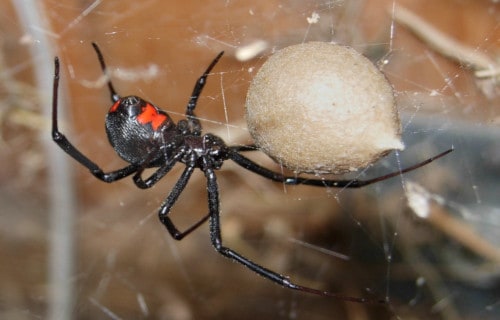
Black Widow Physical Description
Not surprisingly, the various species of Black Widow attain similar physical sizes. However, this remarkable arachnid typically displays a significant amount of sexual dimorphism. This physiological characteristic manifests itself in terms of both color patterns and size.
That’s partly because the female attains an average length of about 1.4 in (3.5 cm), whereas the male stays much smaller. He most commonly only reaches an average length of roughly 0.7 in (1.75 cm). The males also do not display the characteristic red hourglass.
Color patterns also vary relatively significantly between the various forms. All members of this genus, however, appear predominantly black in color. The females of each species, though, all display a very prominent red hourglass shape on their abdomens.
- Kingdom: Animalia
- Phylum: Arthropoda
- Class: Arachnida
- Order: Araneae
- Family: Theridiidae
- Genus: Latrodectus
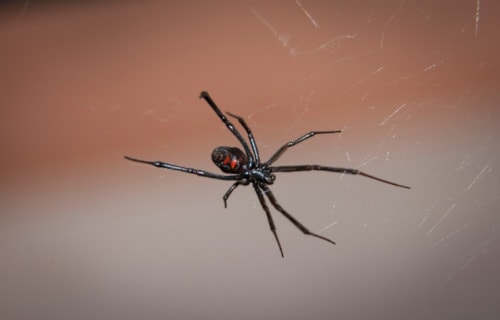
Black Widow Distribution, Habitat, and Ecology
The three species of Black Widow that evolved as native to North America remain the best known of the varieties. The incredible genus also thrives in many other areas of the world, though. In fact, the various species inhabit every continent of the world, except Antarctica.
Quite understandably, given its nearly global distribution, habitat types vary widely. Nevertheless, members of the genus most commonly live in temperate and tropical climates. A few of them, though, even live in extremely arid regions of the world.
Individuals usually build their webs in locations such as around rubble, small trees and bushes, in the wild. But, when found inside of human habitations, webs usually appear in isolated areas, such as attics and garages. This fortunately makes encounters rare.
When a human gets bitten, the venom of a Black Widow commonly causes a condition known as latrodectism. Experiences include profuse sweating, vomiting, muscle rigidity, and extreme pain. These symptoms typically persist for 3-6 days, but can last longer.
All currently known members of this genus hunt as ambush predators, laying in wait in the web. It feeds opportunistically, making a meal of any small creature caught in its web. Its diet, however, typically consists of mosquitoes, grasshoppers, beetles, and such.
Black-and-white Hawk-eagle
Black-and-white hawk-eagle Facts
- Now, among those creatures making an appearance in this article about 6 Prominent Animals of Peru comes the stunning Black-and-white hawk-eagle.
- The distinctive name applied to this natural wonder serves as the common name of a visually remarkable avian species. This magnificent bird also bears the somewhat cumbersome scientific name of the Spizaetus melanoleucus, however.
- The noted French ornithologist Louis Jean Pierre Vieillot holds the distinction of many firsts. Among these is the fact that he represented the first scientist to officially describe the species. This fortuitous action further occurred in the year 1816.
- Unfortunately, despite its numbers and range, a sad fact remains. In point of fact, researchers still know very little about certain aspects of the life of this bird. This lack of information holds especially true in regards to its breeding habits.
- The visually striking creature represents a source of some confusion in scientific circles. This holds true due to a most uncommon set of circumstances. That consists of the fact that it has been moved from one genus to another several times.
- For the moment, the IUCN lists the Black-and-white hawk-eagle as Least Concern. This listing appears in its Red List of Threatened Species. That status, though, could easily change in the near future, as conditions appear to be changing rapidly.
- For one thing, its population numbers currently appear to be diminishing. This situation also, lamentably, extends throughout the entirety its natural range. Not surprisingly, the effects of ongoing climate change likely form its greatest threat.
Black-and-white hawk-eagle Physical Description
The gorgeous Black-and-white hawk-eagle merits attention for more than just its size. In point of fact, the bird ranks as a moderate-sized raptor. Like many related species, this animal displays a moderate degree of the physiological trait of sexual dimorphism.
In the case of this particular creature, this characteristic manifests itself in the fact that some females attain a slightly larger average weight. The species as a whole develops respectable measurements. Adults reach an average body length of about 20 – 24 in (50 – 60 cm).
A typical wingspan for both genders, furthermore, equates to roughly 46 in (117 cm). Weight, though, remains where the genders differ slightly, overall averages remain approximately equal. To be precise, a typical weight equals roughly 1.88 lb (0.85 kg).
In terms of appearance, however, no gender-based differences appear. In point of fact, both sexes of the remarkable Black-and-white hawk-eagle remain virtually indistinguishable. As the common name suggests, the basic color scheme appears as black and white.
This pattern of colors, meanwhile, generally presents itself with the body, neck, and head being white in color. The wings of the magnificent bird display a dark black, along with a lone black spot on the top of the head. But the tail shows brown with dark gray.
- Kingdom: Animalia
- Phylum: Chordata
- Class: Aves
- Order: Accipitriformes
- Family: Accipitridae
- Genus: Spizaetus
- Species: S. melanoleucus
Black-and-white hawk-eagle Distribution, Habitat, and Ecology
Despite not being widely known, the sincerely extraordinary Black-and-white hawk-eagle inhabits a fairly broad swathe of the world. That holds true due to the fact that the remarkable animal inhabits portions of both North America and South America.
Impressively, that native territory does not simply entail minor regions of the two continents. More precisely, the fascinating bird appears as far north as southern Mexico. However, its known endemic range also extends as far south as the country of Argentina.
Within this wide range, though, it possesses highly specific requirements. That holds true since it only inhabits specific habitat types. These consist of consist of forests of any time. While it does inhabit highly humid and dense forests if it must, these are not preferred.
The physically impressive bird has even more decidedly precise preferences for where it makes its home. It only inhabits such regions that appear at lower altitudes, unless forced to relocate there. This marvel of Nature also prefers regions with close-packed canopies.
Like other raptors, the stunning Black-and-white hawk-eagle evolved to feed exclusively as a carnivore. Although it hunts opportunistically, it does, like most animals, have preferred prey. These primarily consist of various toads, small mammals and lizards.
One more unusual factor about its nature remains, though. To the surprise of many researchers, a large percentage of its diet also consists of various types of small birds. Although certain animals prey on its young in the nest, adults have few natural predators.
Mata mata
Mata mata Facts
- Holding down the fifth spot among our choices for inclusion in this compendium of 6 Prominent Animals of Peru comes the intriguing reptile named the Mata mata.
- The unique name it holds actually represents one of several versions of the same common name. The others consist of mata-mata and matamata. Its scientific name, meanwhile, remains that of the relatively simple to pronounce Chelus fimbriata.
- Regardless of the name you choose to use for it, the term refers to a highly distinctive species of freshwater turtle. In point of fact, it’s renowned for its unique appearance. This prompts some people to refer to the animal as a living fossil.
- The first official scientific recognition of this remarkable creature took place in the year 1741. At that time, the renowned French naturalist Pierre Barrere described it, but did not name it. Quite surprisingly, it has been renamed more than a dozen times.
- The amazing reptile also stands out for another reason. Unlike many species today, its population numbers appear to still be sufficient and stable. As a result, the IUCN now lists the Mata mata as Least Concern on its Red List of Threatened Species.
- Given its particular habitat range, however, it must be considered to be at least potentially at risk in the future. One of the factors to be considered remains that of possible habitat loss. Its greatest threat, though, will likely come from climate change.
Mata mata Physical Description
Although the astounding Mata mata garners fully merited appreciation, it does not do so based on physical size. In those terms, the reptile only qualifies as roughly an average-sized variety of turtle. It’s in other manners that this particular turtle stands out.
In terms of dimensions, the carapace of a fully mature adult specimen averages about 18 in (45 cm) in length. Its weight, meanwhile, averages roughly 33 lb (15 kg) for the same adult individuals. The truly distinctive characteristics, though, appear in other areas.
The Mata mata also displays a very slight degree of the physiological trait of sexual dimorphism. In its case, this trait manifests itself in the appearance of the tail of the animal. Specifically, that of the adult male develops as somewhat thicker than that of the female.
Otherwise, the genders remain virtually indistinguishable. Its most notable characteristic, however, remains its remarkable shell. This develops an oblong shape, and a covering of sharp ridges. The precise reason for this eludes scientists studying the animal.
It also develops a relatively large, and, incredibly, a strongly flattened head, with a small horn on its snout. The carapace itself typically displays either a dark brown or black color. The neck, tail, head, and limbs, though, most commonly display a grayish brown shade.
- Kingdom: Animalia
- Phylum: Chordata
- Class: Reptilia
- Order: Testudines
- Family: Chelidae
- Genus: Chelus
- Species: C. fimbriata
Mata mata Distribution, Habitat, and Ecology
The astonishing creature known as the Mata mata inhabits a relatively extensive region of the world. This same region also happens to be one that abounds with an astounding variety and abundance of life. It evolved as endemic to specific portions of South America.
More precisely, though, it primarily appears in the expansive Amazon and Orinico Basins. This provides it with an enormous area in which to make its home. Even there, though, the truly remarkable turtle has very specific requirements for its choice of habitat.
This creature prefers to live in relatively slow-moving, blackwater streams. It will also, though, appear in other, similar environments. These most commonly include such areas as marshes, larger stagnant pools, and even occasionally certain swampy areas.
Being primarily an aquatic species, it spends the majority of its time submerged in water, with only its snout extending. This skilled hunter snaps its powerful jaws closed on any hapless small fish or invertebrate that ventures to close, swallowing it whole.
In its region, the mighty Mata mata nests between October and December, after mating. The female typically lays between 12 – 28 delicate, spherical-shaped eggs. These she deposits in the nest constructed by, and watched over by, both parents until hatching occurs.
South American Sea Lion
South American Sea Lion Facts
- Closing out this collection of 6 Prominent Animals of Peru, the breathtaking South American Sea Lion makes its presence known.
- The term used for this marvel serves as one of the common names of a particularly impressive variety of pinniped. This daunting physical specimen also goes by several other, equally interesting, if less informative, alternate common names.
- Quite distinctively, these include such names as Patagonian Sea Lion, Southern Sea Lion, and the lobo marino. But, among researchers, the truly remarkable animal goes by the reasonably pronounceable scientific name of the Otaria flavescens.
- Yet, regardless of which of these many terms one uses to refer to it, one fact stands out. That’s the fact that, sheer size notwithstanding, this specific species remains one of the most impressive of all of the six known forms of sea lion. That’s a true claim to fame.
- Quite fortunately, though, at least for the moment, the South American Sea Lion appears to be maintaining a sizable and relatively stable population base. This pleasant, if unexpected, situation also holds true throughout the entirety of its natural range.
- The IUCN, therefore, presently lists it as Least Concern on its Red List of Threatened Species. The impressive creature nonetheless must be considered to be facing at least some risk. Among these, its greatest threat likely consists of climate change.
South American Sea Lion Physical Description
It bears mentioning that the truly magnificent South American Sea Lion impresses for reasons other than sheer physical size. That holds true due to the fact that, although a large animal, it actually only ranks as a roughly average-sized species of sea lion.
But, the fascinating creature makes its mark mainly due to several other factors. Firstly, this magnificent example of the power of evolution displays a much more significant degree of the physiological trait of sexual dimorphism than many related species.
For one thing, females of the remarkable species typically attain an average length of roughly 7 ft (2.1 m). These further weigh about 330 lb (150 kg). Meanwhile, males reach an average length of about 9 ft (2.73 m), and most typically mass around 770 lb (349 kg).
Secondly, in addition to be significantly heavier and slightly longer, males of this particular species stand out for yet another reason. This holds true partly due to the fact that males generally develop a much larger head than their female counterparts.
The great majority of males also have one more claim to fame. These generally possess the most highly developed mane of any of the known sea lions. Otherwise, though, mature adults of both genders typically display the same physical appearance.
Quite interestingly, colors vary significantly between individuals, regardless of gender. The colors themselves, though, consist of either a dark orange, or a brown. Finally, both sexes of the amazing South American Sea Lion develop a sharply upturned snout.
- Kingdom: Animalia
- Phylum: Chordata
- Class: Mammalia
- Order: Carnivora
- Family: Otariidae
- Genus: Otaria
- Species: O. flavescens
South American Sea Lion Distribution, Habitat, and Ecology
Not at all surprisingly, the very name itself of the truly awesome South American Sea Lion provides an obvious clue to its native range. That’s because, as the common name implies, the huge mammal evolved as native to a portion of the continent of South America.
But, this includes only a small portion of the region. More precisely, this work of Nature evolved as endemic to the waters off of a total of six countries. This range covers the countries of Ecuador, Peru, Argentina, Uruguay, the Falkland Islands, and southern Brazil.
Even within this limited range, however, the beautiful creature only appears in very specific, and often quite isolated areas. This holds true because the gorgeous South American Sea Lion only inhabits a very narrow zone within the region.
In point of fact, the animal rarely strays far from the shore, relatively speaking. In these areas, it tends to group together in large herds, on rocky outcroppings. The amazing creature also conducts mating practices and nesting practices in the same general region.
The beautiful but powerful animal also evolved as a fully predatory carnivore. In this manner, it possesses the same habits and patterns as its relatives. It also possesses a moderately broad diet, but shows a strong preference for a variety of fish.
Individuals nevertheless also consume other species as well, though usually opportunistically. This other prey mainly includes small cephalopods, such as squids and octopuses. On occasion, though, it has even been seen feeding on penguins and pelicans.
6 Prominent Animals of Peru
We greatly hope that each of you completely enjoyed reading, and hopefully learning from, this article we’ve written about these 6 Prominent Animals of Perus It’s also our hope that doing so has left you with either a new or renewed appreciation for such wonders of Nature.
Unfortunately, however, many of their kindred around the world now find themselves facing strong threats to their continued existence as a species. Many of those dangers, in fact, stem from the actions of mankind. We must do all we can to protect and preserve them.
Check out our other articles on 5 Astounding Spiders of Asia, Earth’s Many Stunning Waterfalls, 7 Breathtaking Canyons and Gorges, The Mighty Tornado
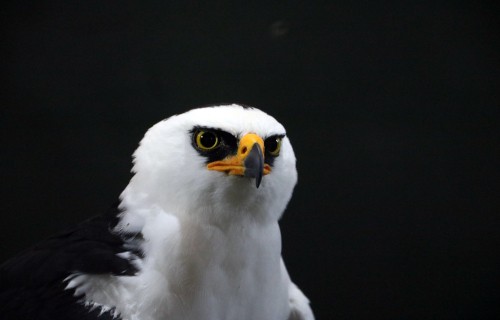
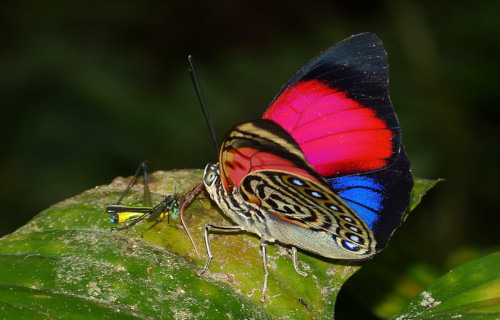
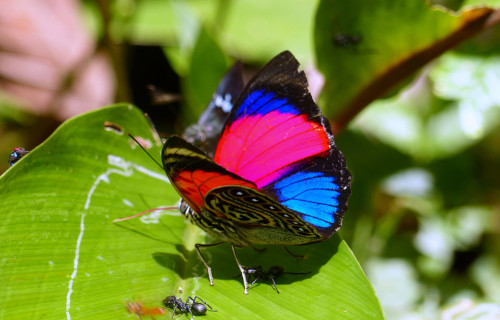
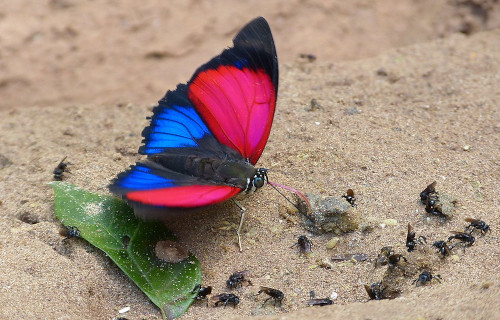
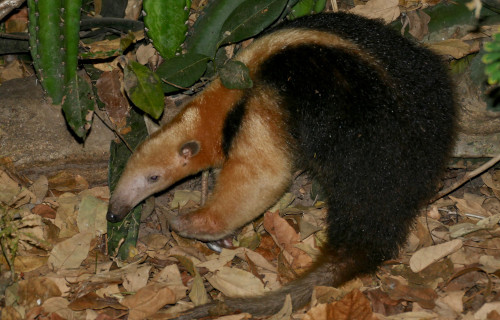
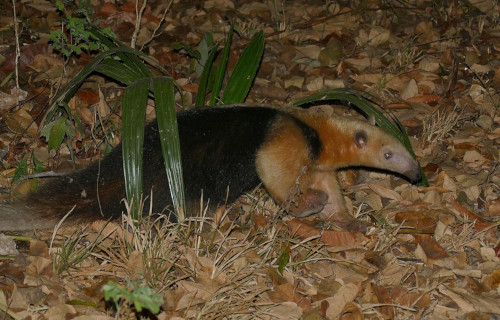
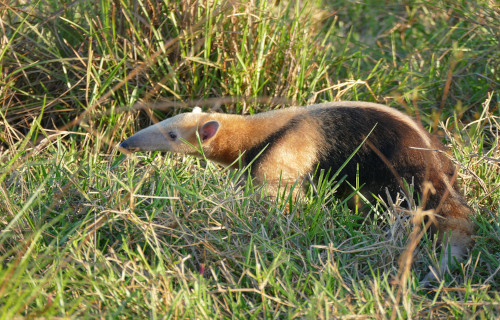
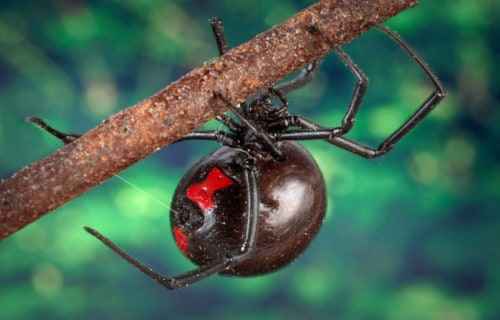
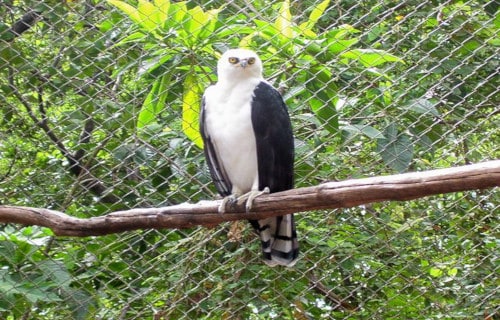
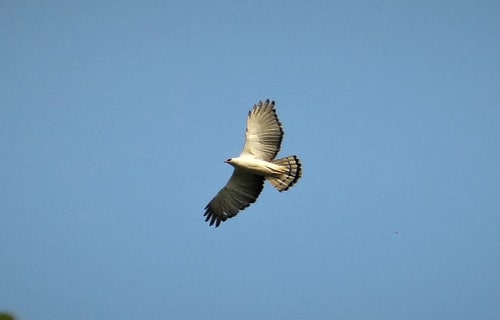
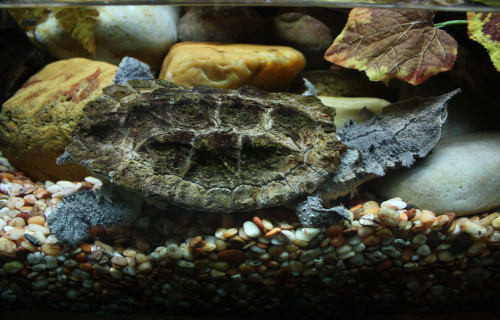
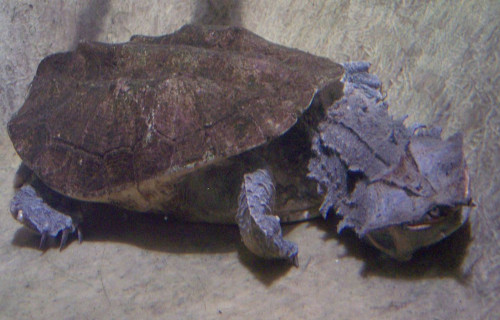
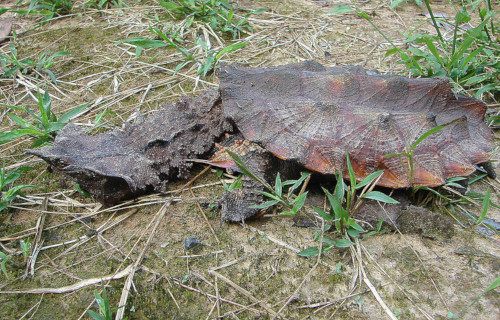

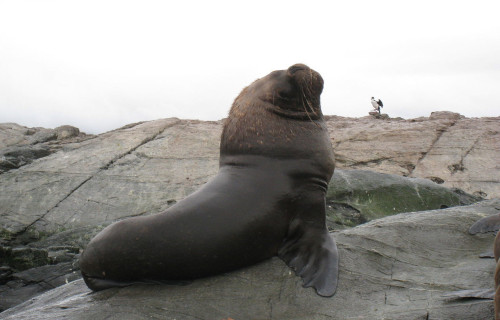










Leave a Reply